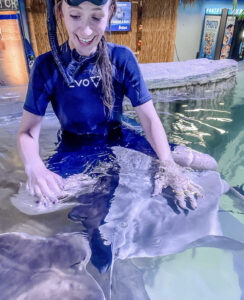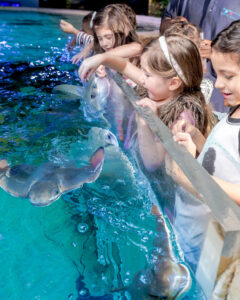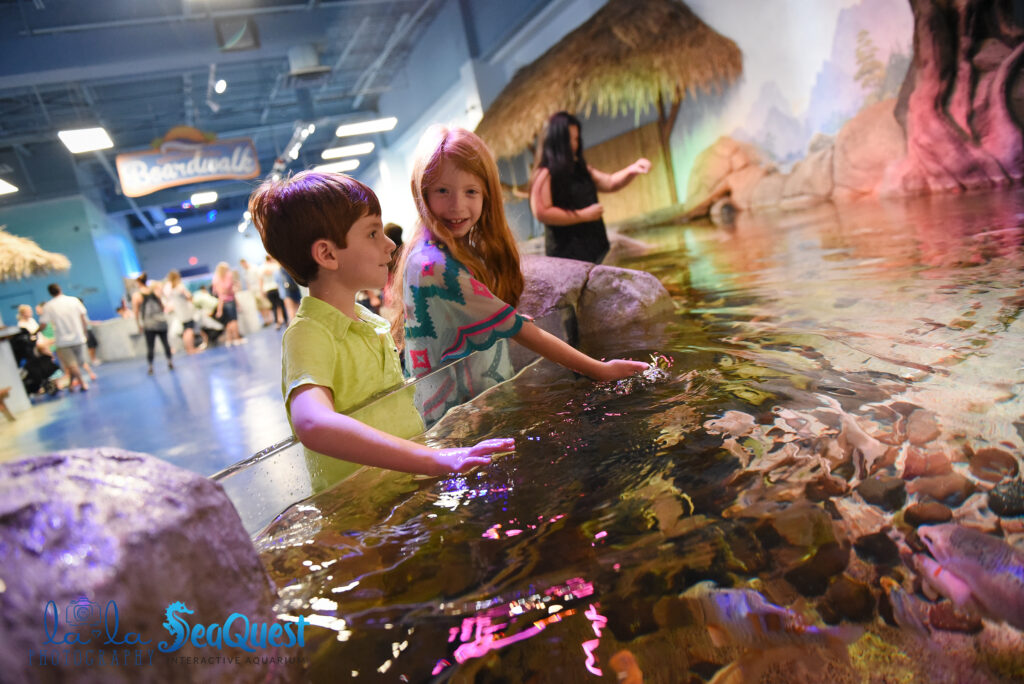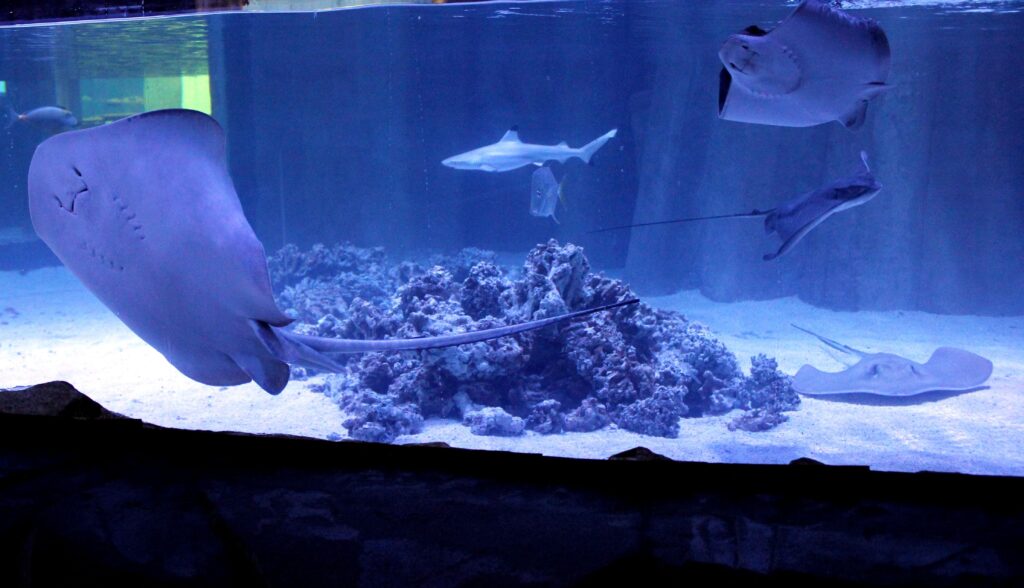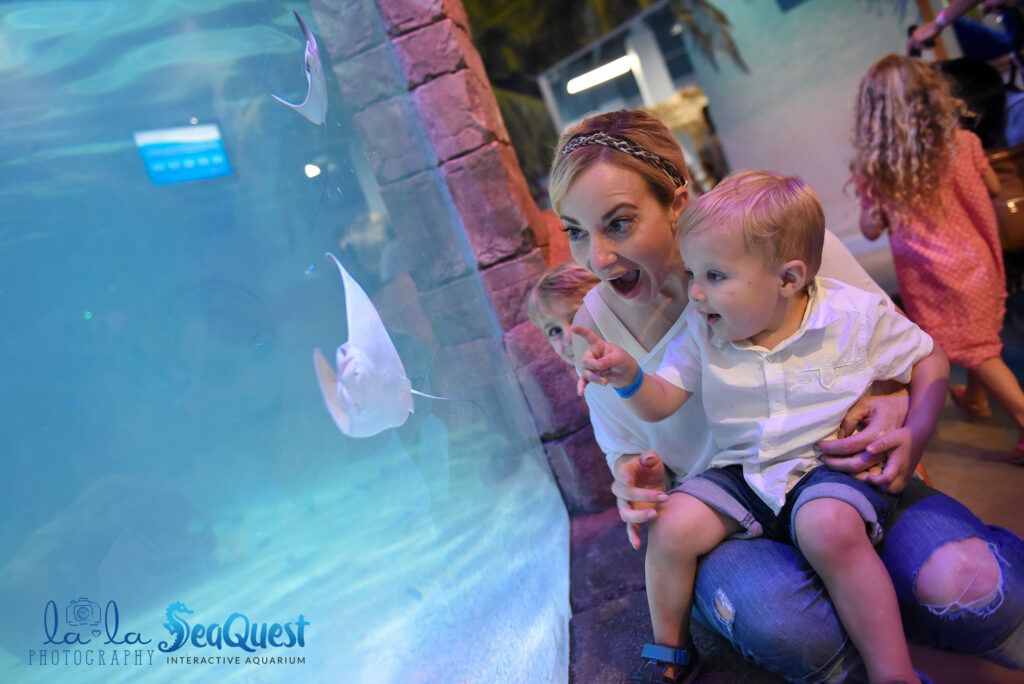How Are Stingrays at SeaQuest Cared For?
Share it on:
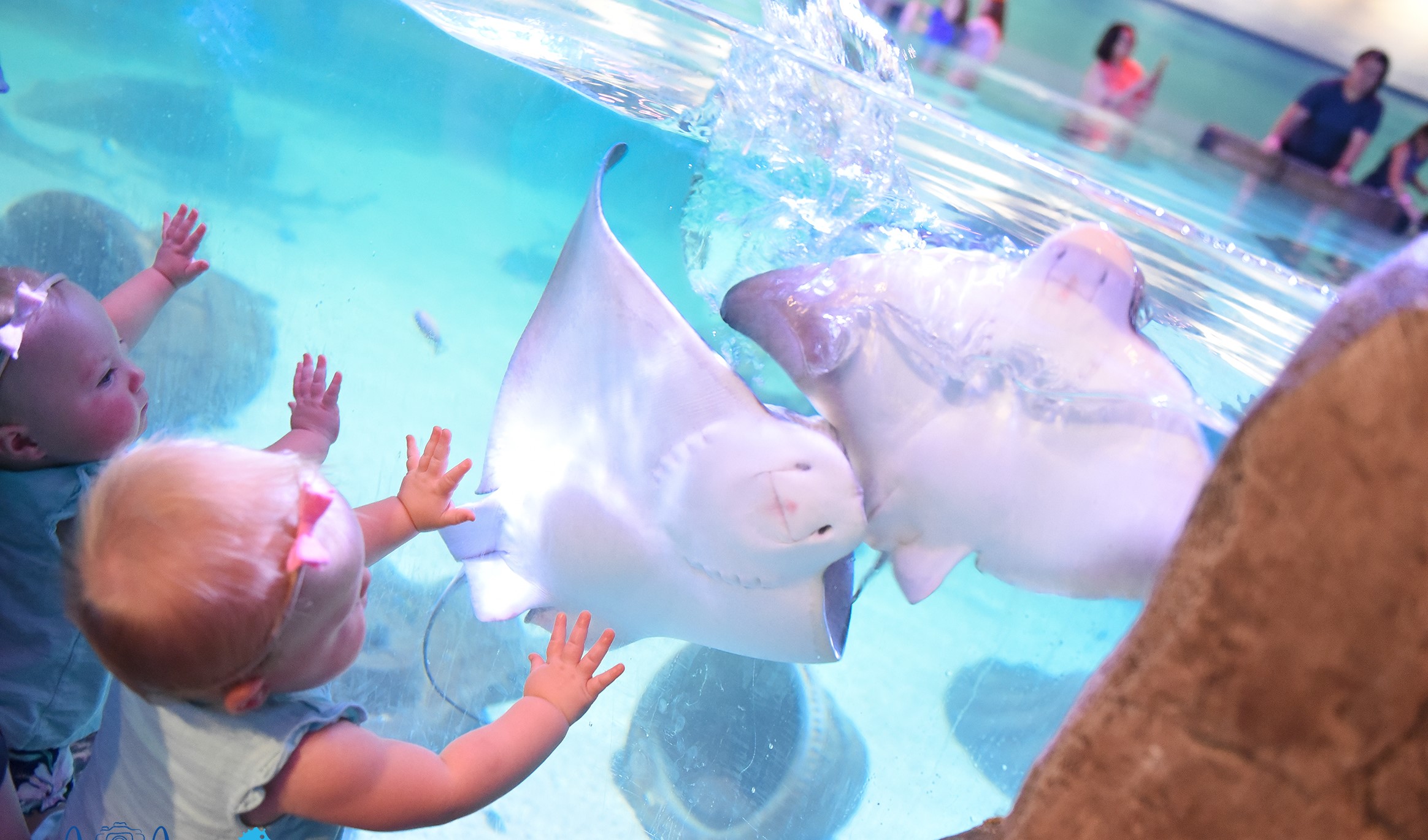
Dive into the enchanting world of stingrays at SeaQuest! We support the well-being of each stingray through state-of-the-art habitats, specialized healthcare, and tailored nutritional programs. Let’s explore the innovative and compassionate approaches we use to maintain their well-being. Whether hanging out in a touch tank or a replica habitat, SeaQuest’s stingrays are happy and healthy thanks to our efforts.
Stingray Care at SeaQuest
We aim to create a safe and enriching environment for stingrays at SeaQuest. A dedicated group of marine biologists and aquarists (marine team) apply their specialized knowledge and passion to every aspect of stingray care. These professionals ensure that each stingray thrives in a habitat that mimics their natural environment as closely as possible, complete with carefully controlled water quality and temperature.
Ethical considerations and conservation efforts are at the heart of our approach to marine life care. Our team adheres to strict ethical standards in all interactions with the animals, promoting a respectful and minimally invasive approach. Furthermore, SeaQuest actively participates in various conservation initiatives, contributing to global efforts to protect stingrays and their natural habitats. These commitments reflect our dedication to the well-being of the stingrays in our care and the broader mission of marine conservation.
We continually update our staff on stingray habitats, behaviors, and diet to provide the best care. Each SeaQuest employee becomes an expert in stingray care.
What Is a Stingray’s Natural Habitat?
Stingrays inhabit diverse aquatic environments, from the shallow coastal tropical waters to the deeper, cooler regions of temperate seas. SeaQuest meticulously controls water quality and temperature in their habitats to mimic these natural conditions. Our precision ensures that each stingray is in an environment resembling its native habitat. Additionally, SeaQuest’s habitats incorporate naturalistic features that encourage typical stingray behaviors such as foraging and resting, providing these creatures with familiarity and comfort.
Social Interactions and Solitary Behaviors
Stingrays participate in various social structures — some species enjoy companionship and form groups, while others live solitary lives. SeaQuest habitats are specifically designed to cater to these differing social needs. For species that thrive in groups, communal areas facilitate interaction and mimic social behaviors observed in the wild. Conversely, we provide ample private space for solitary species to ensure these stingrays can enjoy solitude.
Diet and Nutrition: What Do Stingrays Eat?
Stingray diets are primarily composed of shellfish and small fish. Our feeding methods are tailored to encourage natural hunting and foraging behaviors, such as burying food items in the sand to simulate search and retrieval. This not only provides mental stimulation but also keeps their predatory skills sharp. We also monitor the health of each stingray, allowing our marine team to adjust diets as necessary.
The Health and Well-being of Stingrays
To ensure no health problem goes unnoticed, we conduct regular health examinations of our stingrays. Here’s how.
Ensuring Optimal Water Conditions at SeaQuest
At SeaQuest, we know that stingrays need precise water conditions to thrive. Advanced filtration systems keep the water clean and clear, removing toxins and maintaining ecological balance. Regular testing of water parameters ensures that conditions such as salinity, temperature, and pH closely match those found in the stingrays’ natural habitats. These measures meet the specific needs of different stingray species, ensuring that each individual thrives in an environment as close to nature as possible.
Veterinary Care and Health Monitoring at SeaQuest
Each stingray receives meticulous attention from a team of in-house specialized veterinarians who treat and rehab injured or ill stingrays. Modern veterinary technology is crucial in ensuring accurate diagnoses and effective treatments. This comprehensive approach to veterinary care maintains the health and well-being of all stingrays at SeaQuest.
Educational and Conservation Initiatives
We believe that our responsibility goes beyond just giving stingrays a good home; a significant initiative for our team is to educate the public about these creatures. Here are some ways that we actively contribute to the conservation of stingrays.
SeaQuest’s Role in Stingray Conservation
SeaQuest actively supports global stingray conservation efforts by forming partnerships with various environmental organizations and providing essential funding for conservation projects. By participating in research initiatives, SeaQuest contributes to the growing body of knowledge about stingray behaviors and ecological needs, thus preserving the species in the wild.
Moreover, SeaQuest strongly emphasizes public education, aiming to raise awareness about stingrays and the broader issues surrounding marine conservation. Through these educational efforts, visitors gain a deeper understanding of stingrays’ critical role in ocean ecosystems and the importance of protecting such magnificent creatures.
Encouraging Responsible Interactions With Stingrays
At SeaQuest, we carefully manage visitor interactions with stingrays to ensure the safety of both the animals and the guests. Clear guidelines foster respectful and gentle interactions, helping to prevent any stress or harm to the stingrays. These interactions are always supervised by knowledgeable staff who prioritize the stingrays’ well-being. We also offer educational talks and demonstrations that enhance visitor understanding and appreciation of stingrays.
By meticulously replicating natural habitats and providing specialized dietary and health care, SeaQuest enhances the lives of the stingrays in our care. Through our dedicated efforts in conservation and research, SeaQuest plays a crucial role in safeguarding the future of stingrays and promoting the health of our oceans. As visitors leave SeaQuest, they have a greater appreciation and understanding of stingrays and are empowered to contribute positively to worldwide marine conservation efforts.

